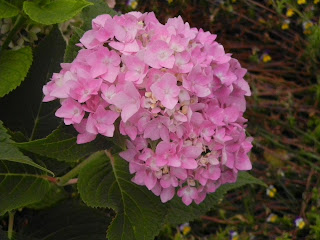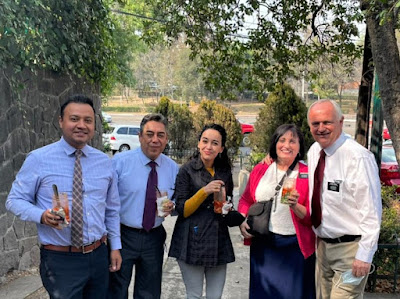Something Wild

A couple of weeks ago my husband and I spent some time at our cabin in Island Park. I enjoyed seeing the wildflowers on our drive there and around the cabin once we arrived, but they seemed sparse, and I feared I had missed the peak of the wildflower display this year. Then we decided to take a drive and try to find the trailhead of a hike my husband had heard about. This adventure took us well off the beaten path to a road so remote that the only other people we saw were forest service employees practicing a drill. Along this road the wildflowers were still in their prime. Thank goodness I have a patient husband who dutifully slammed on the brake every time I yelled, "Stop!" Otherwise I wouldn't be able to share this little taste of the beauty we saw.
The bright color of paintbrush always catches my eye, but I have seldom seen is growing as thickly as it was here. My camera didn't do the display justice. Bright orange-red paintbrush grew back into the trees for as far as I could see.
 I have always know this wildflower as fleabane, but my wildflower book refers to it as showy daisy--a much nicer sounding moniker. Despite its dainty appearance, this is one tough plant. I have seen it growing on the very edge of dusty gravel roads in dirt packed so hard it would be hard to get a shovel in it.
I have always know this wildflower as fleabane, but my wildflower book refers to it as showy daisy--a much nicer sounding moniker. Despite its dainty appearance, this is one tough plant. I have seen it growing on the very edge of dusty gravel roads in dirt packed so hard it would be hard to get a shovel in it.
Like the paintbrush, this flower was growing in thick clusters.
Lupine, a perennial favorite, wasn't growing as thickly as I have sometimes seen, but it did make an appearance.
 Sticky geranium is one of my all time favorites. It is closely related to varieties of domestic perennial geraniums, which I use in nearly every landscape design I do. It is long blooming, and its foliage turns bright orange in autumn.
Sticky geranium is one of my all time favorites. It is closely related to varieties of domestic perennial geraniums, which I use in nearly every landscape design I do. It is long blooming, and its foliage turns bright orange in autumn.
In the wild I have only seen sticky geranium with purplish-pink flowers. That is until this trip. Here I found white flowered geraniums growing along side the more common ones.
Fireweed is so named because it grows back quickly and thickly after an area has been burned by forest fire. But it grows in unburned areas as well, and is another favorite of mine (I seem to be saying that a lot.)
I think this flower is angel parsley, but I'm not sure because there are several wildflowers that look similar to this. Its the massive size of this one that makes me think it is angel parsley, which can grow to be 5 feet tall. This one was just about that big.
 This plant has a flower similar to angel parsley, only much smaller. I'm not certain what it is, maybe Queen Anne's lace?
This plant has a flower similar to angel parsley, only much smaller. I'm not certain what it is, maybe Queen Anne's lace?
Many homeowners in southeastern Idaho have potentilla bushes growing in their yards. This flower, cinquefoil, is a relative of that bush, but has a herbaceous form. Still, you can see the resemblance in the flowers.
Wild larkspur looks identical to the larkspur grown in flower gardens. It is a relative of and smaller version of delphinium.
 We were on our way out of the forest when I spotted a patch of sego lilies. I grew up hearing stories of how the Mormon pioneers survived their first year in Utah by eating the bulbs of this plant.
We were on our way out of the forest when I spotted a patch of sego lilies. I grew up hearing stories of how the Mormon pioneers survived their first year in Utah by eating the bulbs of this plant.
I've shown you pictures of individual flowers, and in some places we passed a single species of flower dominated. But in many other places, multiple species grew together in a meadow size bouquet.
In case you are wondering, we never did find the trailhead we started out to look for, but I think you will agree after seeing these pictures, our drive wasn't wasted.












Comments
Post a Comment